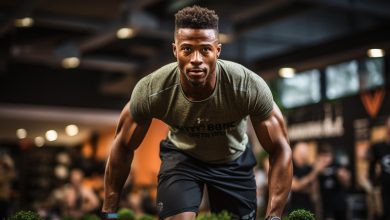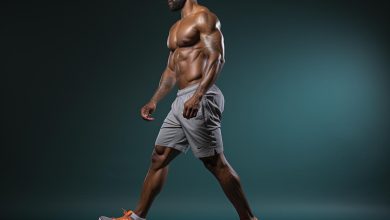Essential Stretches for Improving Flexibility in Runners

Imagine yourself effortlessly gliding through the finish line, your muscles feeling loose and limber. As a runner, flexibility is key to achieving peak performance and preventing injuries.
In this article, we’ll explore essential stretches that will help you improve your flexibility and enhance your running experience. From hamstring stretches to hip flexor stretches, we’ve got you covered with evidence-based techniques that are proven to work.
Get ready to take your running game to the next level with these essential stretches for runners.
Hamstring Stretches

To prevent injuries and improve flexibility as a runner, it is important to incorporate hamstring stretches into your routine. Proper form is crucial in these stretches. Maintaining a straight back and avoiding rounded shoulders helps target the hamstrings effectively and minimize strain on other muscles. It is also important to keep your core engaged for stability and support.
Avoid common mistakes such as bouncing or jerking movements while stretching your hamstrings. These can cause muscle strains or tears, which defeats the purpose of the stretch. Instead, focus on smooth and controlled movements, gradually increasing the intensity over time.
Transitioning into hip flexor stretches, it is important to note that these exercises complement hamstring stretches by targeting another key muscle group involved in running. Strengthening and stretching the hip flexors helps improve stride length and overall running efficiency.
Now that you understand the importance of proper form and common mistakes in hamstring stretching, let’s delve into effective techniques for stretching your hip flexors.
Hip Flexor Stretches
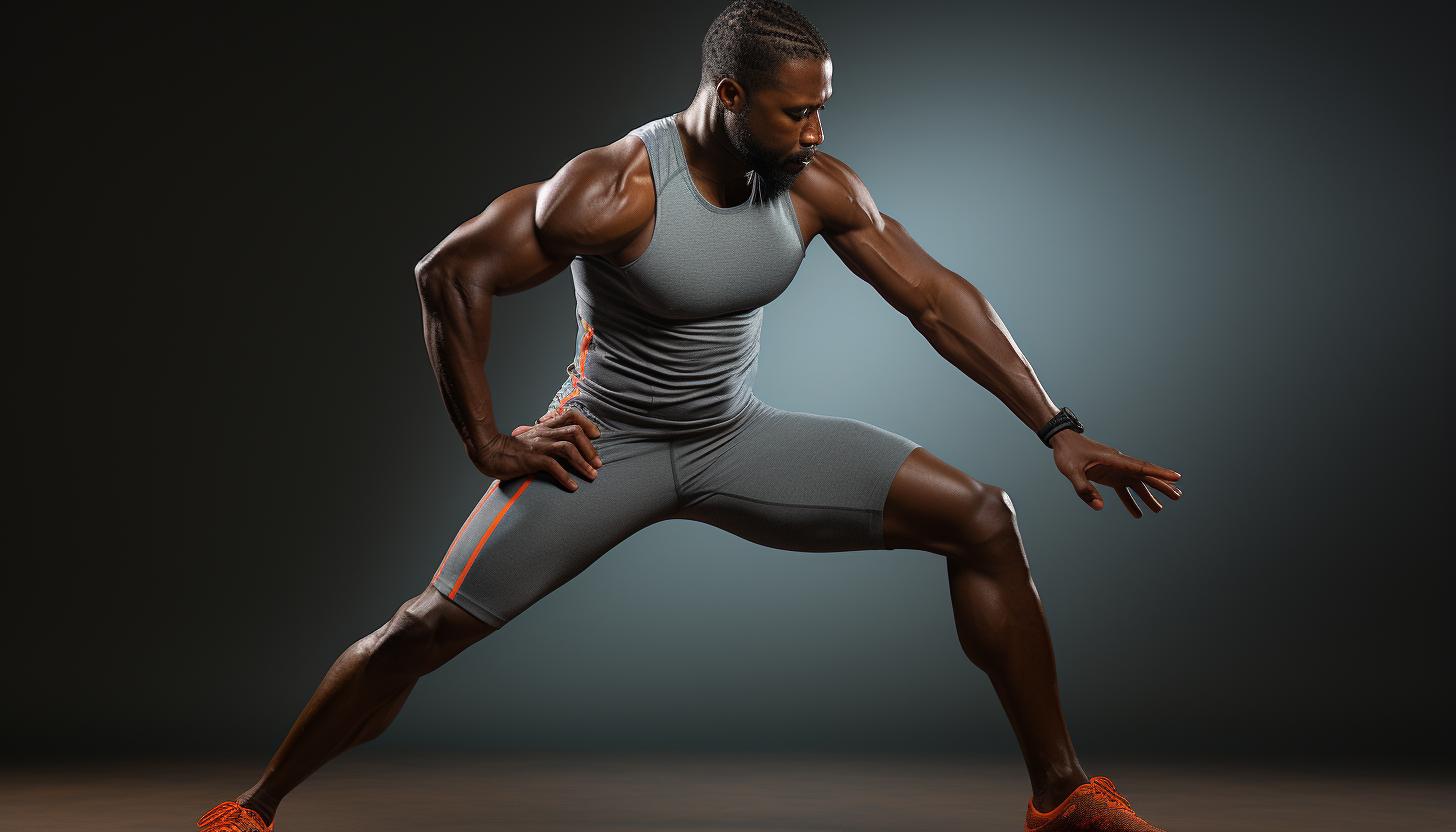
Start by bringing your right knee up towards your chest to stretch the hip flexor muscles. Hip flexor stretches are essential for improving overall mobility, especially for runners. These stretches target the group of muscles located at the front of your hips, known as the hip flexors. By regularly incorporating hip flexor stretches into your routine, you can experience several benefits.
One of the main benefits of hip flexor stretches is improved flexibility in the hips and lower body. Tight hip flexors can restrict movement and lead to discomfort or pain during activities like running or walking. Stretching these muscles helps to lengthen them, allowing for a greater range of motion.
Additionally, hip flexor stretches can help alleviate back pain by reducing tension in the lower back. This is because tight hip flexors can pull on the pelvis and contribute to poor posture and spinal alignment.
To ensure you get the most out of your hip flexor stretches, it’s important to avoid common mistakes. One mistake is not maintaining proper form during the stretch. Make sure to keep your torso upright and engage your core, while gently pulling your knee towards your chest.
Another mistake is rushing through the stretch or not holding it for long enough. To effectively stretch the hip flexors, hold each stretch for at least 30 seconds on each side.
Incorporating regular hip flexor stretching into your routine can greatly improve overall mobility and help prevent injuries. So start by bringing that right knee up towards your chest today!
Calf Stretches

Make sure you engage your core and gently stretch your calf muscles by pressing your heel down while keeping your foot flat on the ground. Calf stretches are an important part of any runner’s flexibility routine as they help improve range of motion and prevent injuries.
Two key areas to focus on when stretching your calves are the Achilles tendon and the plantar fascia.
To stretch the Achilles tendon, start by standing facing a wall with one foot in front of the other. Keep both feet flat on the ground and bend your front knee while keeping your back leg straight. Lean forward, placing your hands on the wall for support, until you feel a gentle stretch in the back of your lower leg. Hold this position for 30 seconds and then switch legs.
For stretching the plantar fascia, sit down on a chair or bench with one foot crossed over the opposite knee. Using one hand, pull back on your toes to flex them towards you, feeling a stretch along the bottom of your foot. Hold this position for 30 seconds before switching sides.
Incorporating these Achilles tendon and plantar fascia stretches into your regular routine can help improve flexibility in runners and reduce their risk of injury. Remember to always warm up before stretching and listen to your body to avoid overstretching or causing pain.
IT Band Stretches
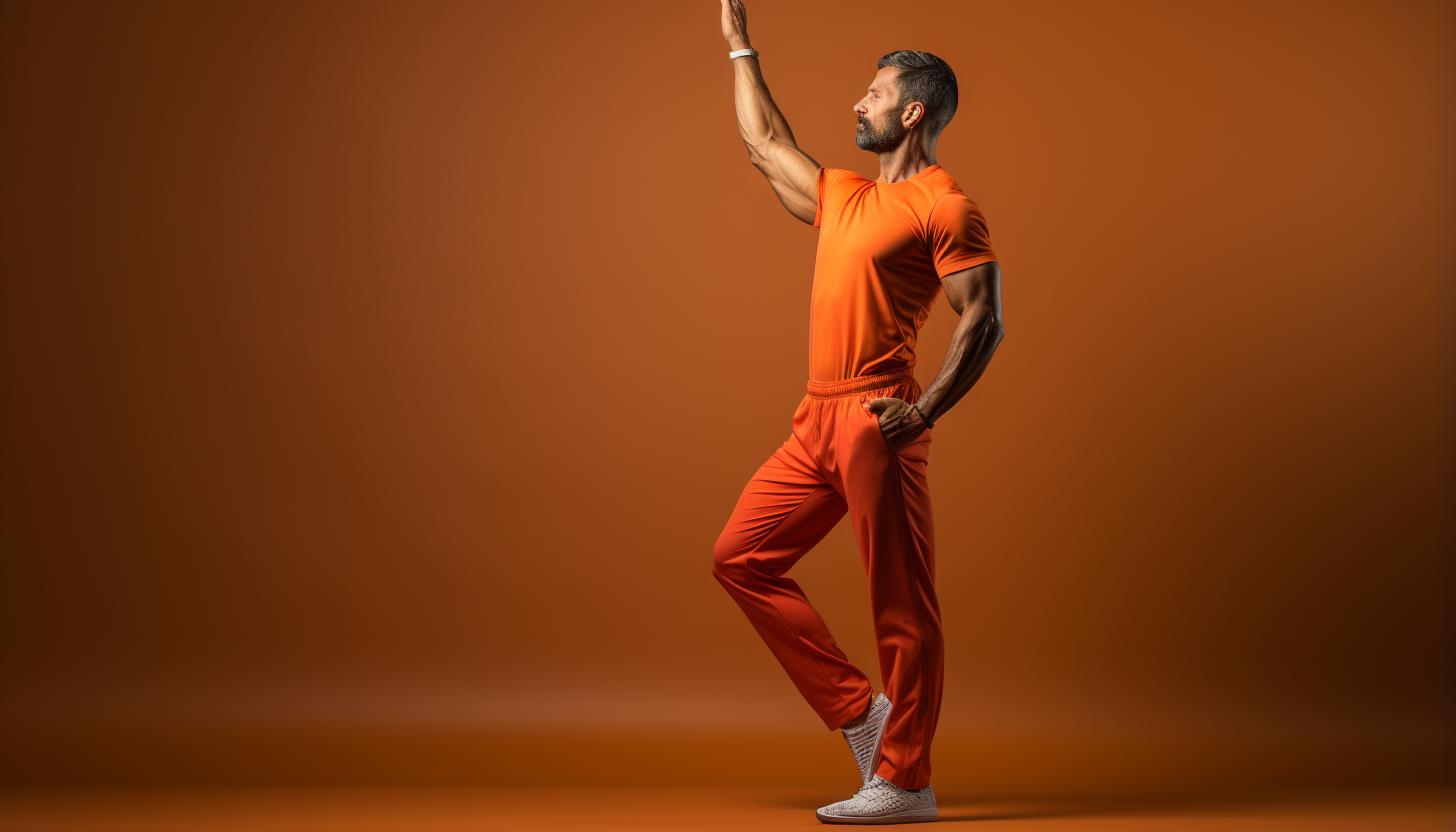
Stretching the IT band can help alleviate tightness and discomfort in the outer part of your thigh. The IT band, or iliotibial band, is a thick band of connective tissue that runs along the outside of your leg, from your hip to your knee. It plays an important role in stabilizing the knee during movement.
Foam rolling is crucial for relieving IT band tightness. Foam rolling helps to break up adhesions and knots in the fascia, which can cause tightness and pain. By regularly foam rolling your IT band, you can improve flexibility and reduce discomfort.
IT band syndrome is a common condition among runners. It occurs when the IT band becomes inflamed or irritated due to repetitive stress or overuse. Some common causes of IT band syndrome include running on uneven surfaces, wearing worn-out shoes, increasing mileage too quickly, and weak hip muscles.
To prevent IT band syndrome, it is important to gradually increase mileage and intensity of training. Additionally, incorporating strength exercises for the hips and glutes can help stabilize the pelvis and reduce strain on the IT band. Regular foam rolling before and after workouts can also help maintain flexibility in the IT band.
Quadricep Stretches
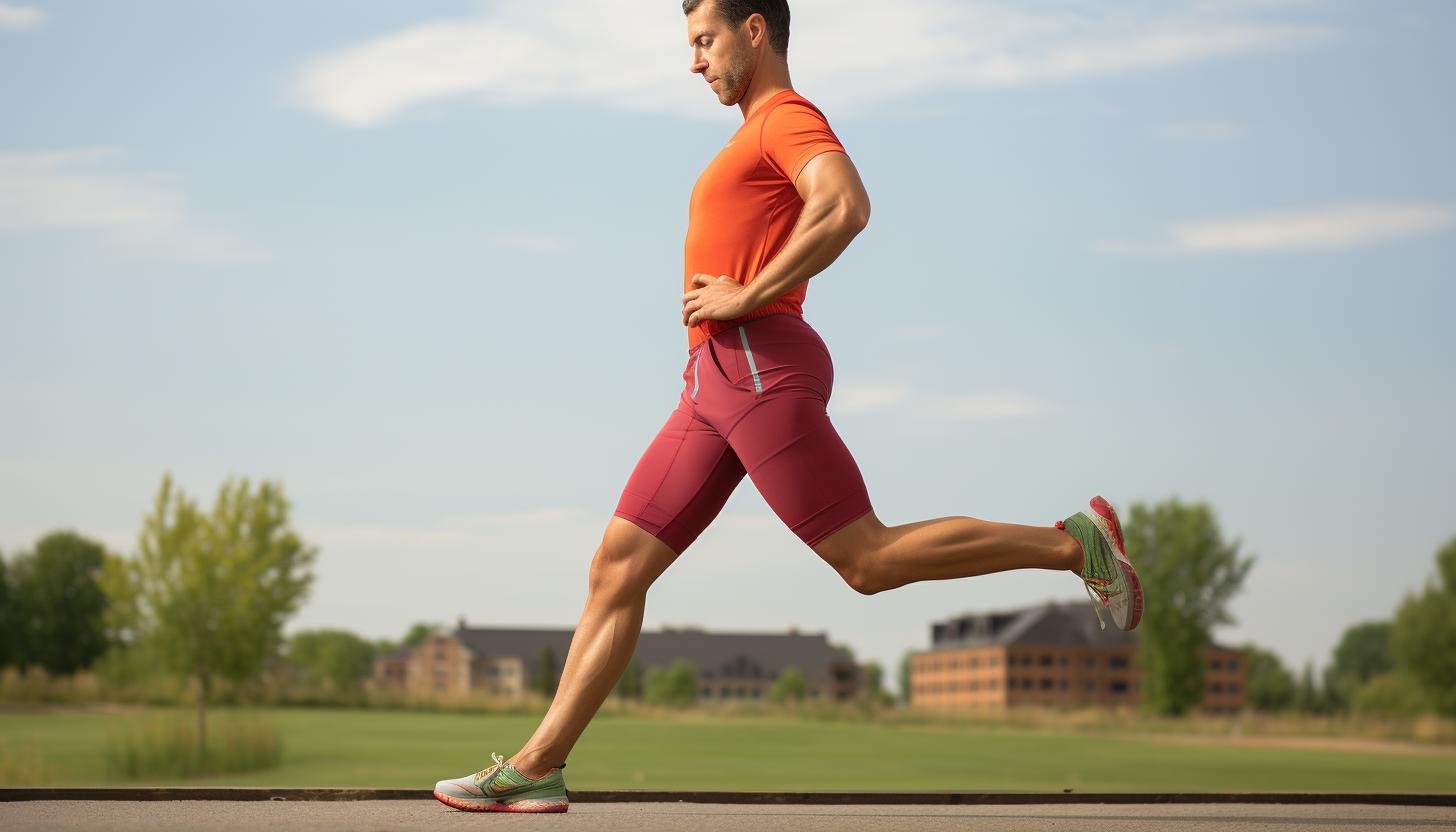
Regularly incorporating quadricep stretches into your routine can help alleviate tightness and discomfort in the front of your thigh. These stretches target the four muscles that make up your quadriceps, namely the rectus femoris, vastus lateralis, vastus medialis, and vastus intermedius.
Here are some important points to keep in mind when performing these stretches:
– Proper form is crucial: Ensure that you maintain proper posture throughout the stretch. Stand tall with your feet hip-width apart and engage your core for stability.
– Static stretching: This involves holding a stretch for 20-30 seconds without bouncing or jerking movements. It helps lengthen and relax the quadricep muscles.
– Dynamic stretching: Incorporating dynamic movements before running can improve flexibility and enhance performance. Perform walking lunges or leg swings to warm up the quads.
– Pre-run warm-up routine: To incorporate quadricep stretches into your pre-run warm-up routine, start by performing a light jog or brisk walk for 5 minutes to increase blood flow to the muscles. Then, move on to dynamic quad stretches such as high knees or butt kicks.
Conclusion
So there you have it, runner! You now know the essential stretches that will improve your flexibility and help you reach new heights in your running journey.
By regularly incorporating hamstring, hip flexor, calf, IT band, and quadricep stretches into your routine, you’ll be able to stretch those muscles to their full potential.
Your legs will feel as limber as a rubber band ready to launch you forward on every stride.
So go ahead and give these stretches a try – your body will thank you!

